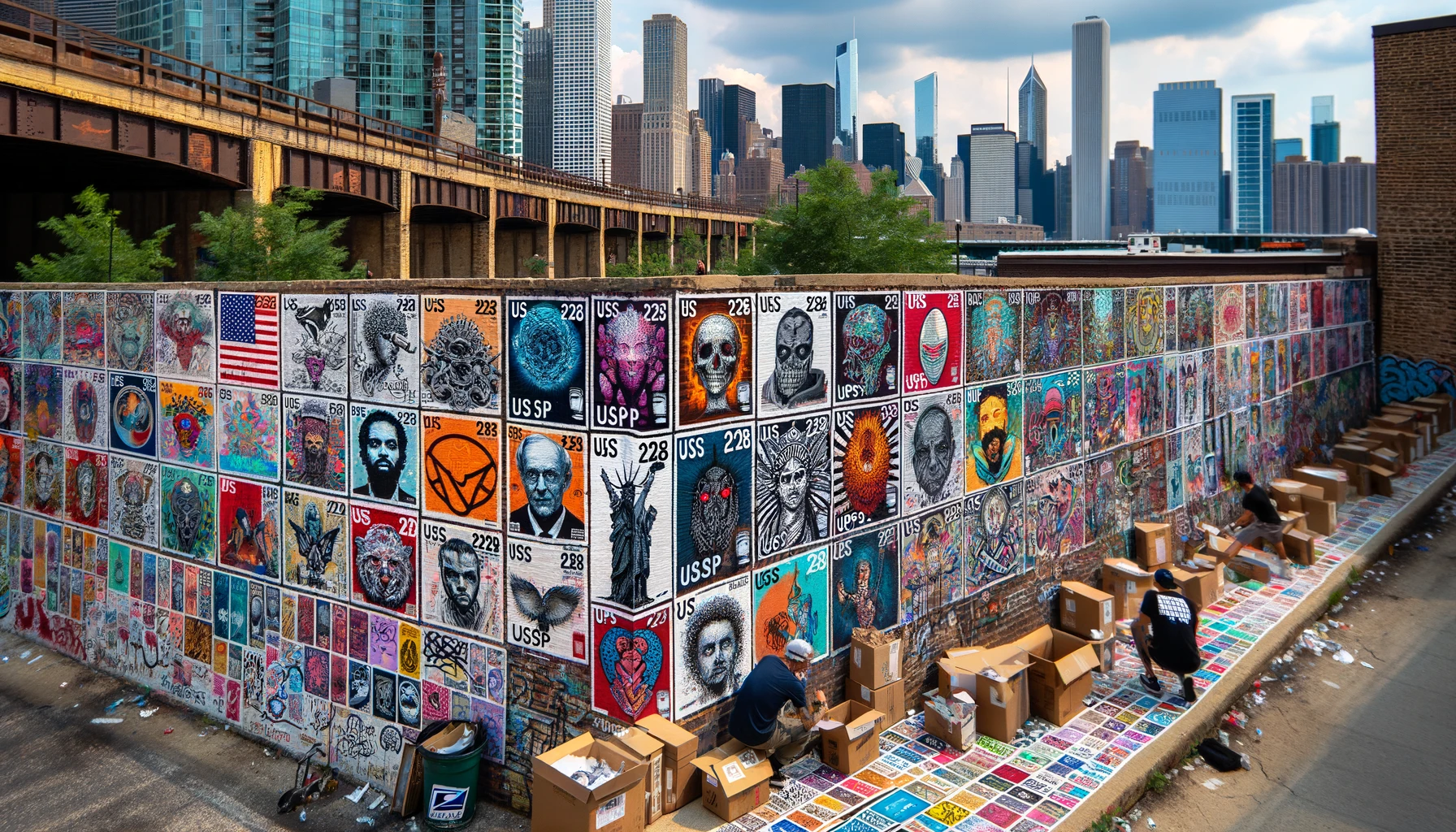USPS Label 228, a large, white sticker with a red and blue border featuring the USPS eagle logo, holds a unique and cherished place in the street art community. While originally designed for priority mail packages, it has been embraced by graffiti and street artists for its practicality and versatility, becoming an iconic canvas for urban creativity.
One of the primary reasons for Label 228’s popularity among street artists is its accessibility. Available for free at most USPS locations, these labels offer an attractive medium for artists looking to experiment without the burden of costs. The easy availability of Label 228 allows for uninhibited creativity, enabling artists to push boundaries without worrying about the financial implications of their work.
The label’s large blank space and adhesive backing make it an ideal canvas for various forms of artistic expression. Whether it is simple tags or intricate illustrations, the versatility of Label 228 caters to a wide range of artistic styles. Its adhesive nature allows for quick and easy application on numerous surfaces, making it perfect for the transient and often clandestine nature of street art.
The historical roots of using postal stickers in street art can be traced back to the early days of graffiti culture. Artists sought materials that were both easy to use and could be widely disseminated. Label 228 quickly became a staple in this context due to its durability and free accessibility. Its widespread use over the years has fostered a sense of community among street artists, who often exchange labeled stickers as a form of collaboration and camaraderie. This practice has created a network of shared creativity and mutual respect within the street art scene.
Label 228 also offers artists the unique advantage of a portable canvas. Unlike traditional graffiti, which is often tied to a specific location, artworks created on these labels can be produced in a controlled environment and later placed in public spaces. This portability expands the reach of street art, allowing artists to experiment with their work in various contexts and environments.
The artistic community’s embrace of Label 228 has not gone unnoticed. Artworks on these labels have gained recognition beyond the street art community, frequently appearing in exhibitions, online galleries, and social media platforms. This exposure has helped street artists gain visibility and appreciation for their work, bridging the gap between street art and mainstream art culture.
Label 228 has become a symbol of DIY culture and artistic innovation. Its use represents a blend of accessibility, creativity, and the subversion of traditional art forms. Notable street artists such as Shepard Fairey and Swoon have used Label 228 in their work, further cementing its status as a legitimate and respected medium within the art world.

The cultural significance of USPS Label 228 in street art is rooted in its accessibility, versatility, historical context, community-building aspects, and the recognition it has garnered within and beyond the street art community. Its role as a portable, cost-effective canvas has enabled countless artists to express themselves creatively and push the boundaries of what street art can be.
